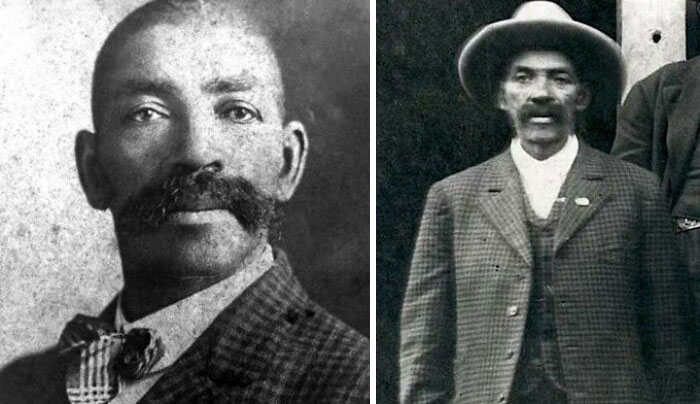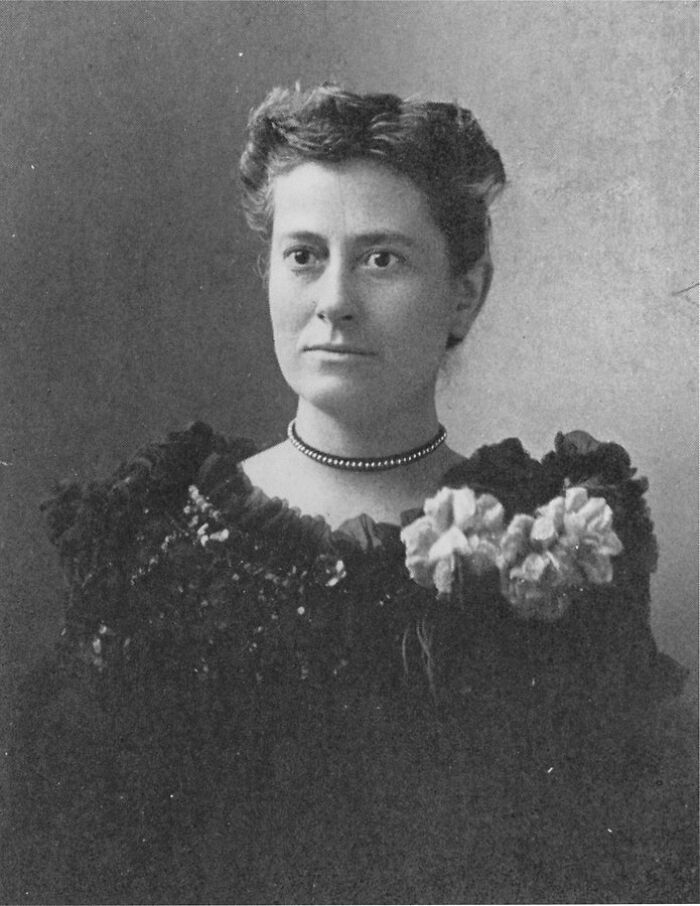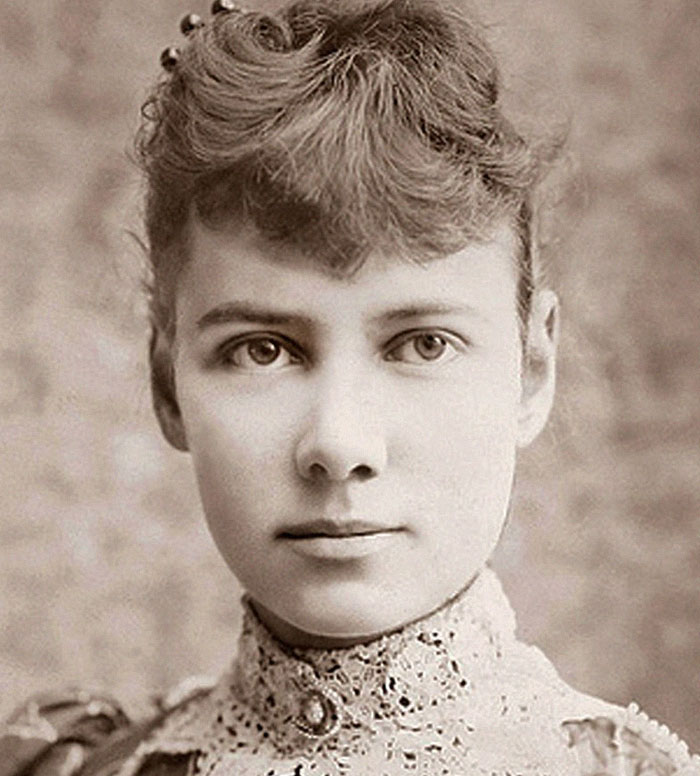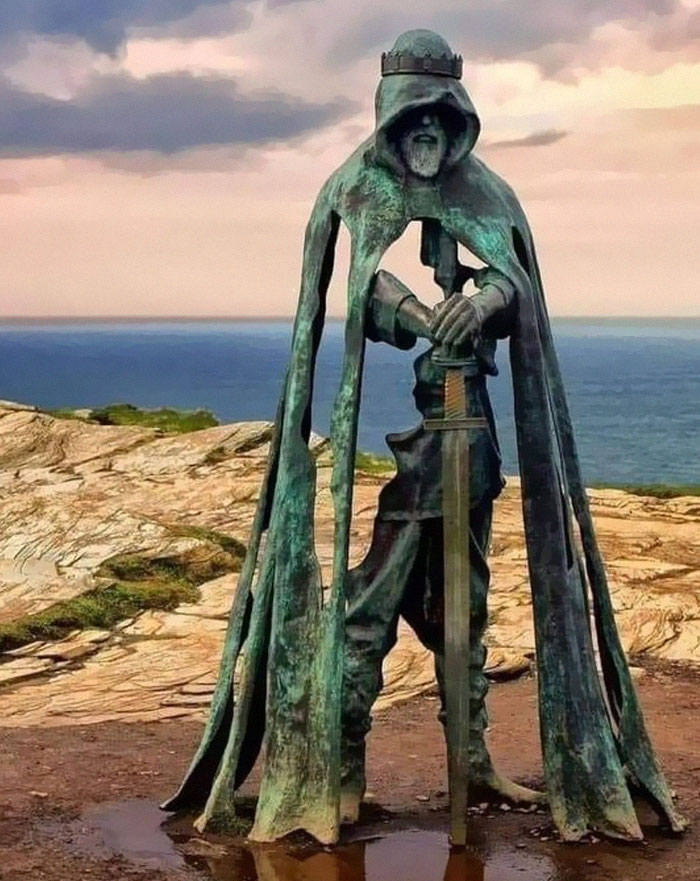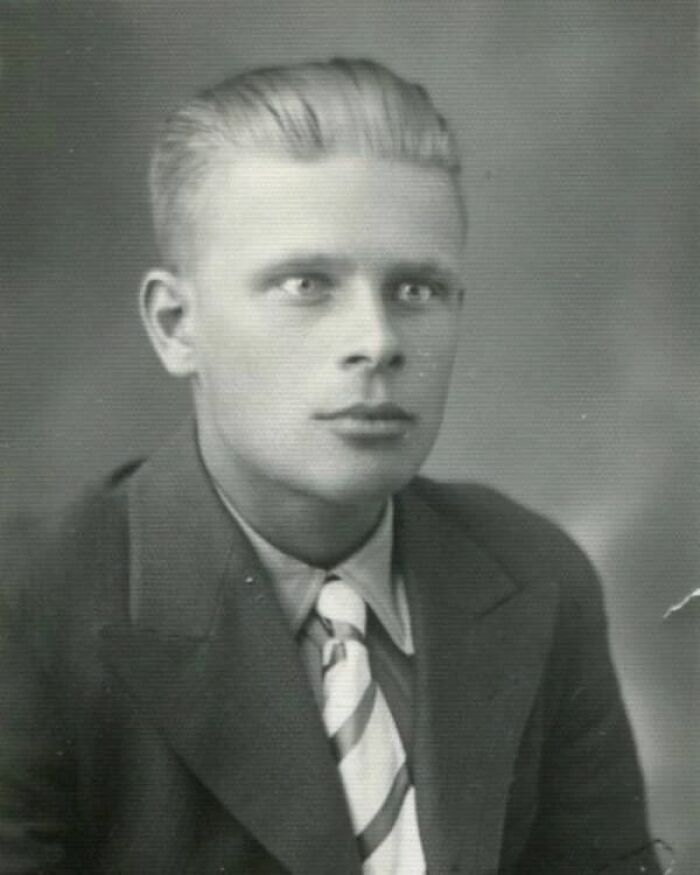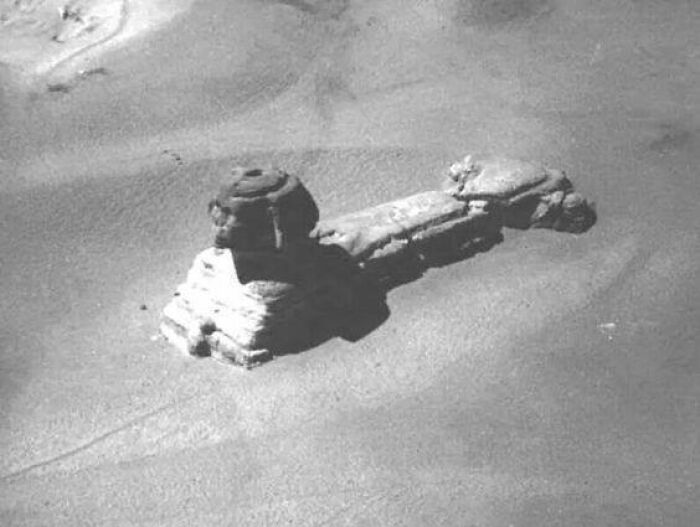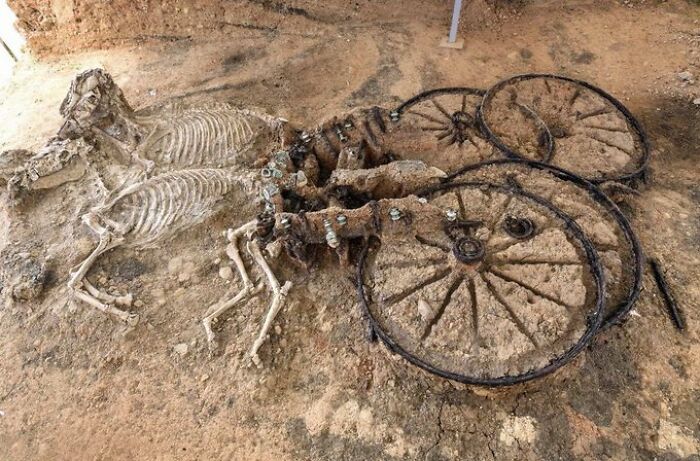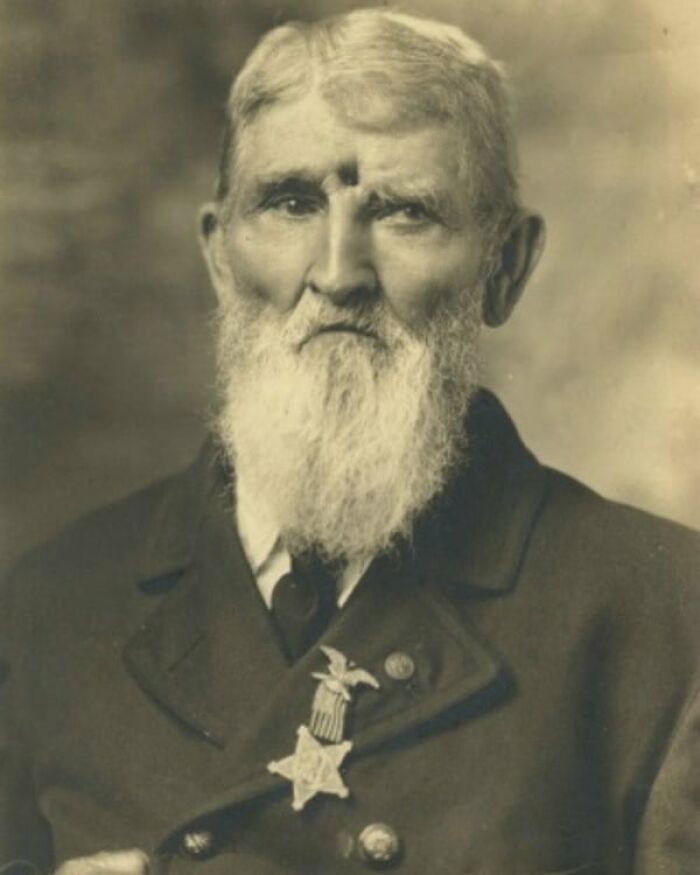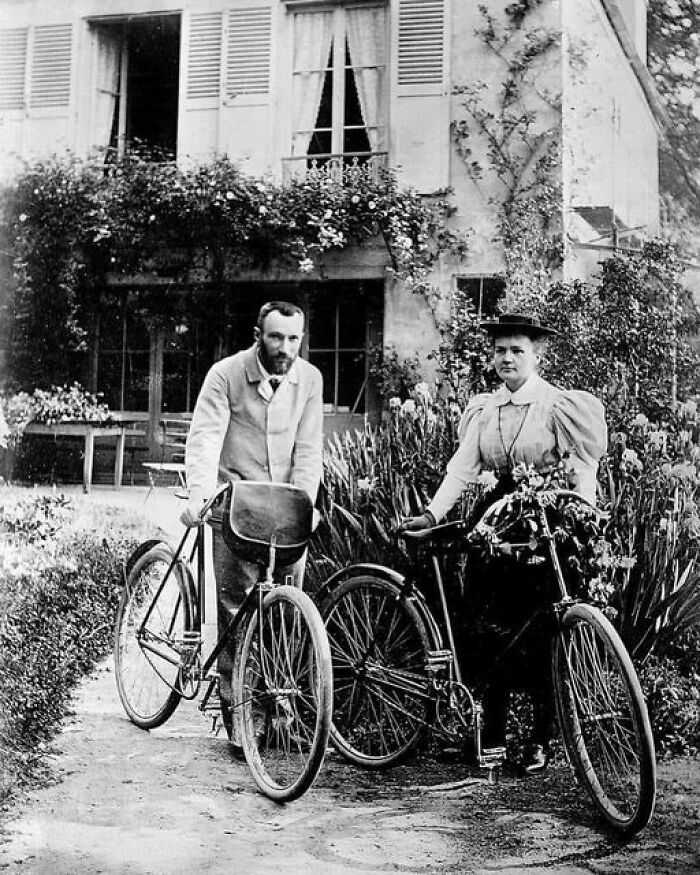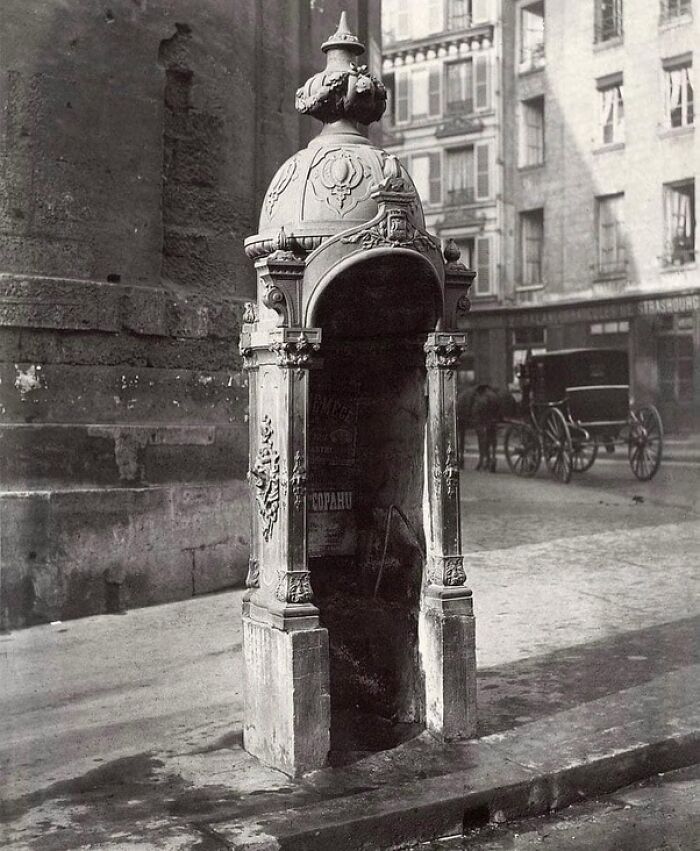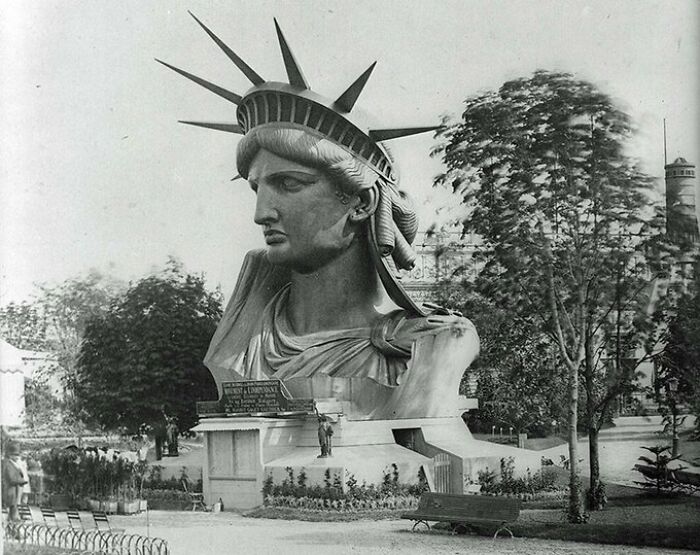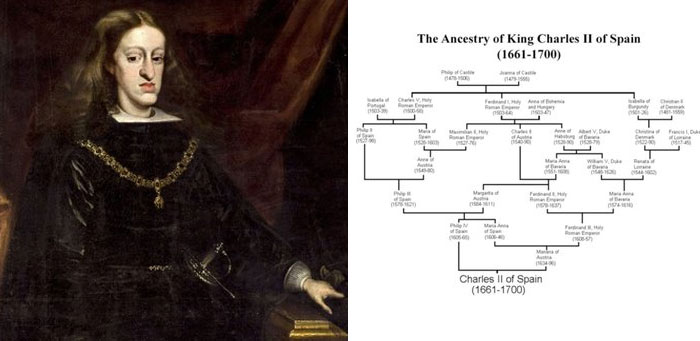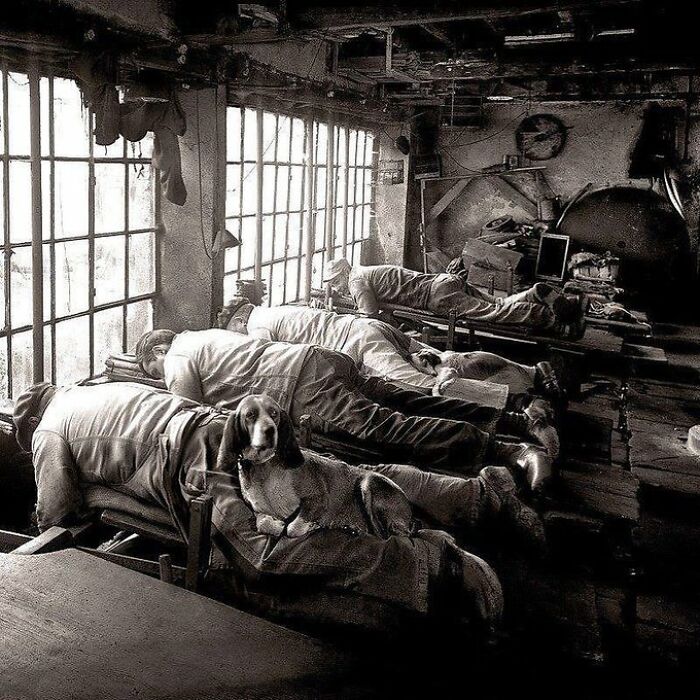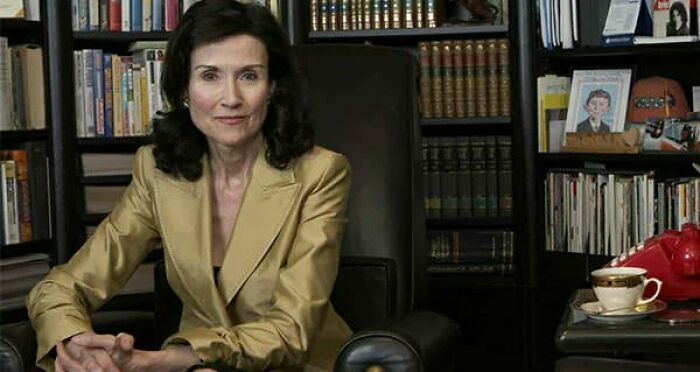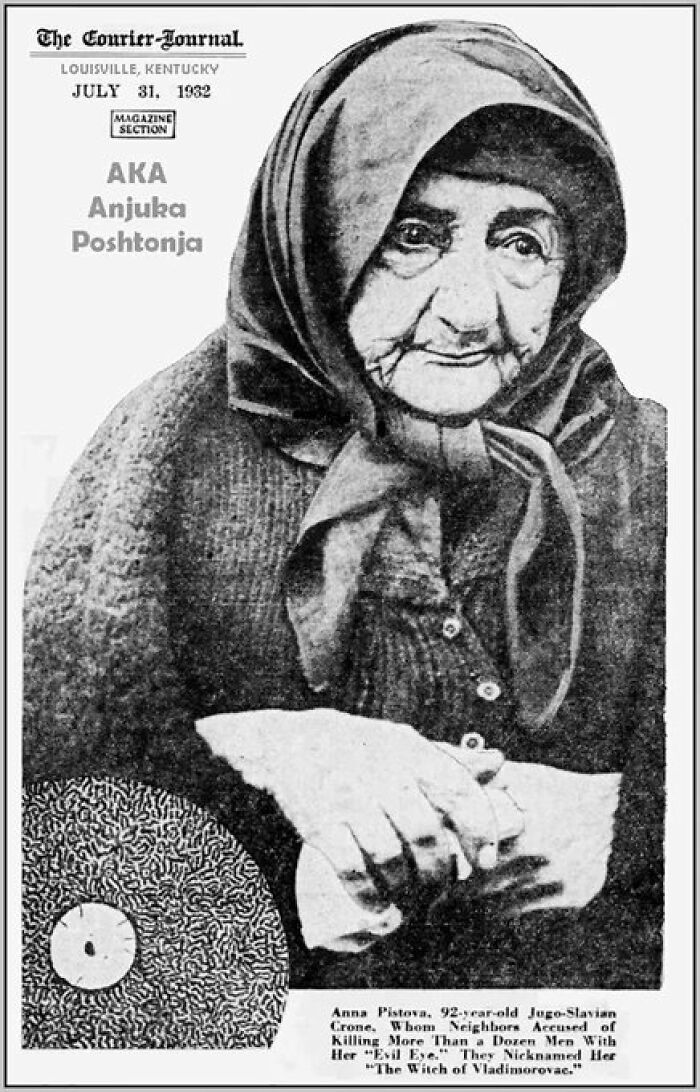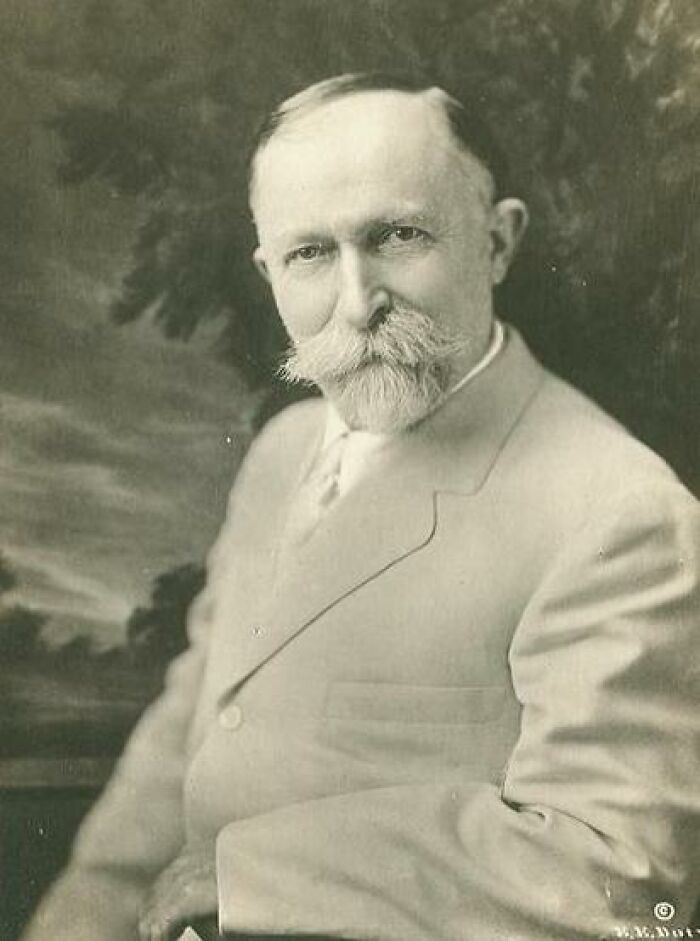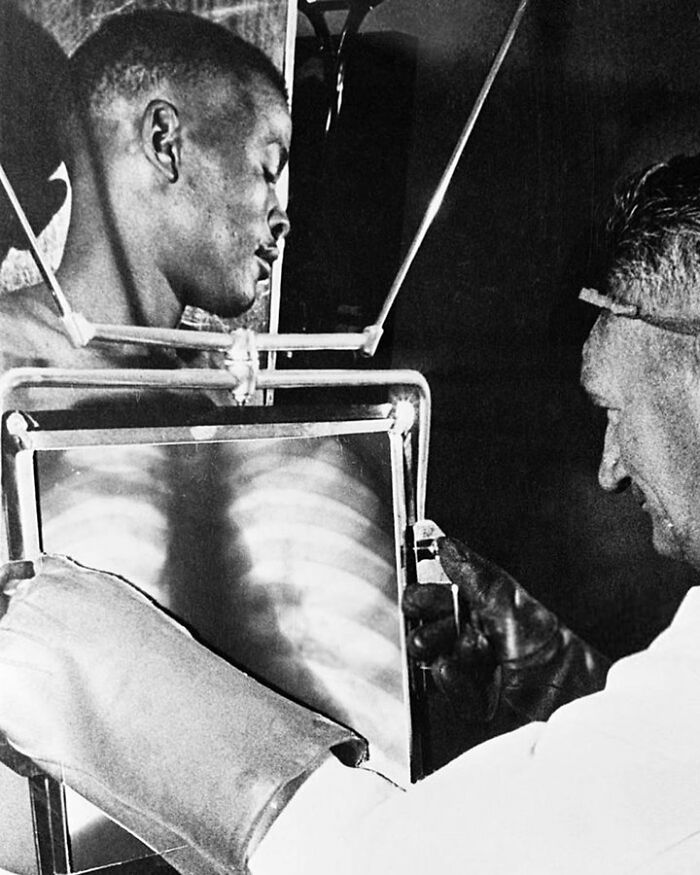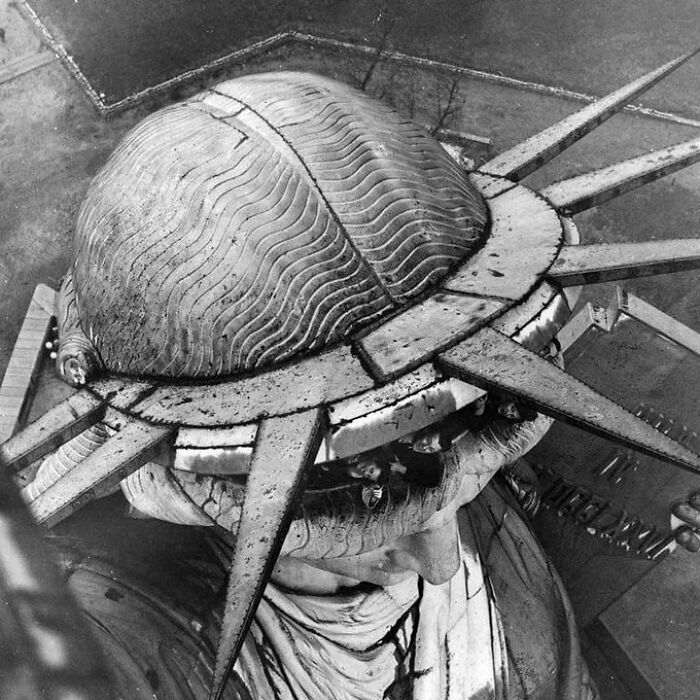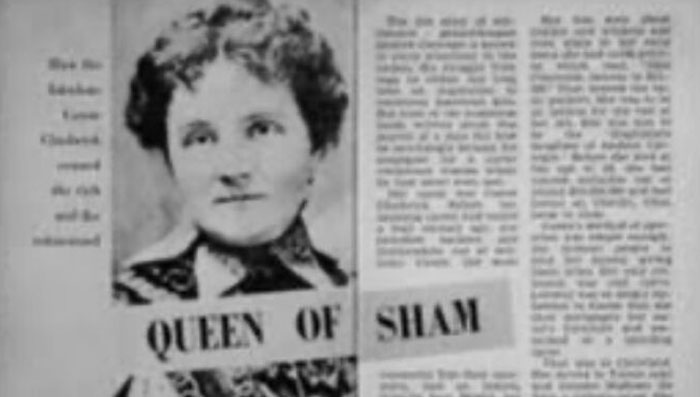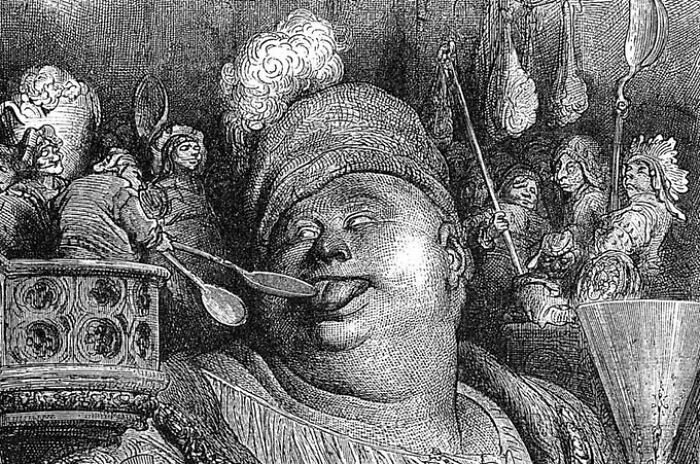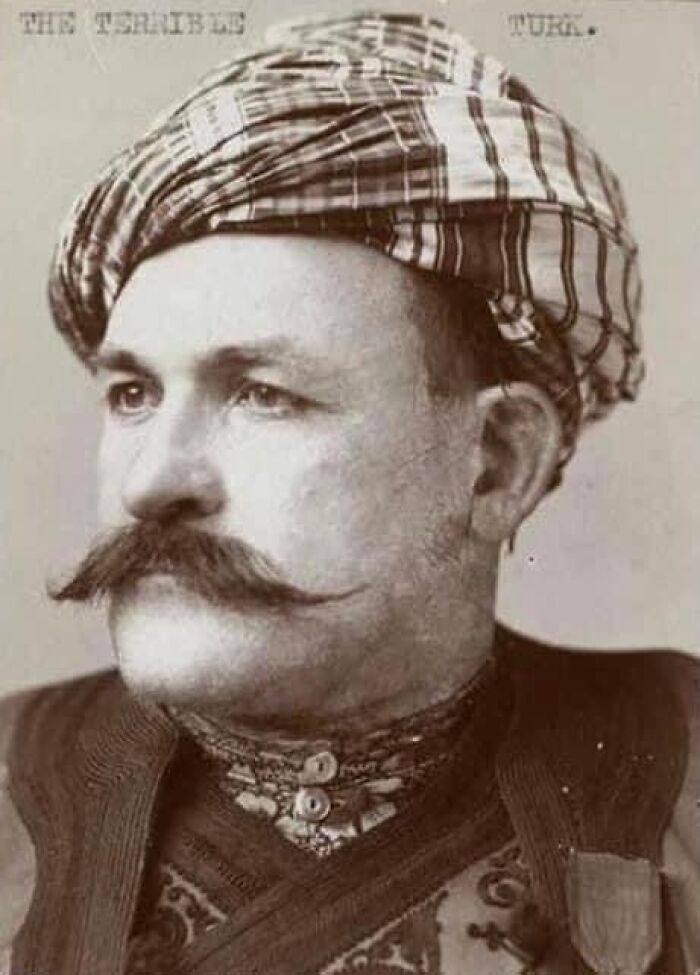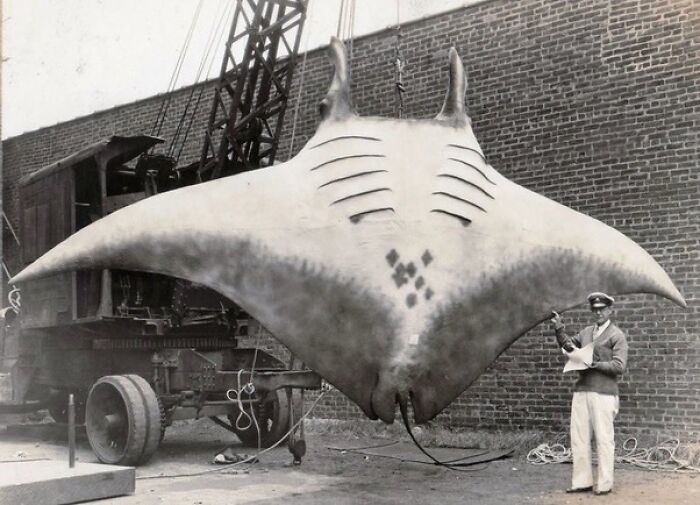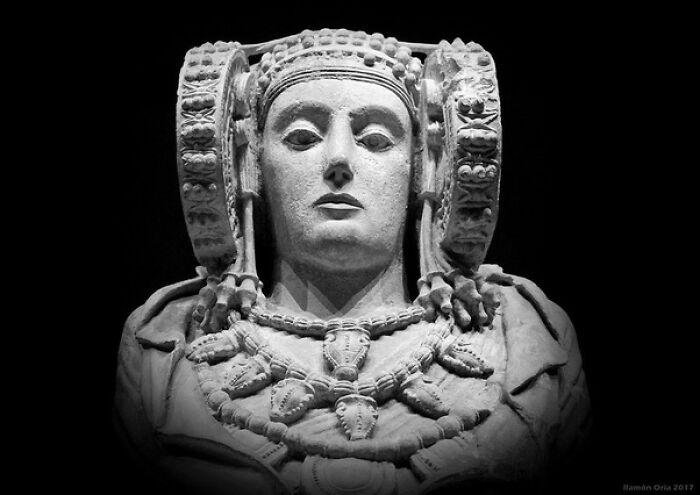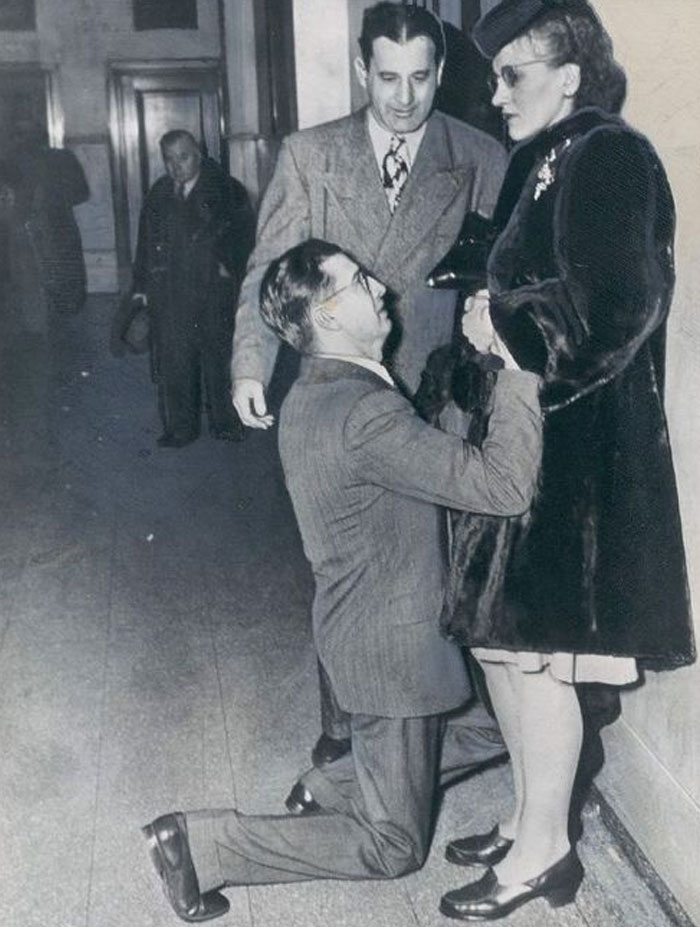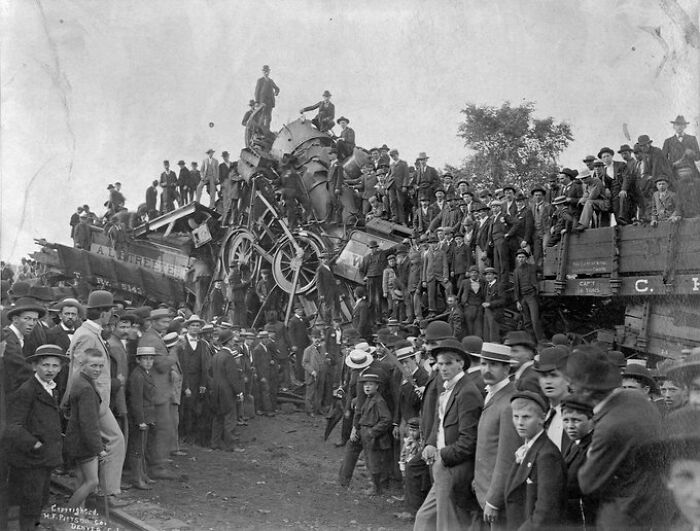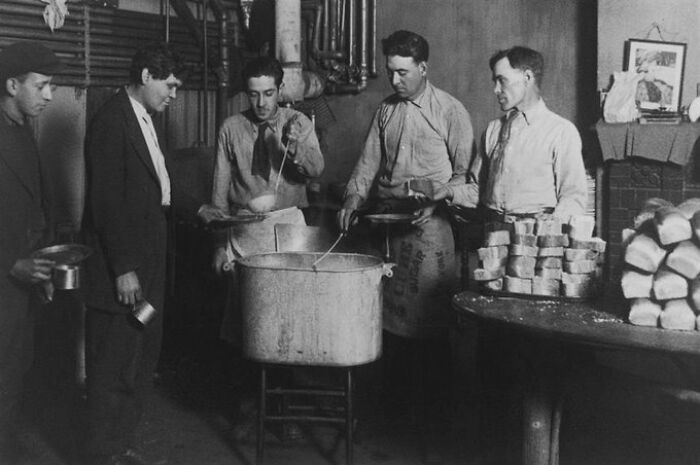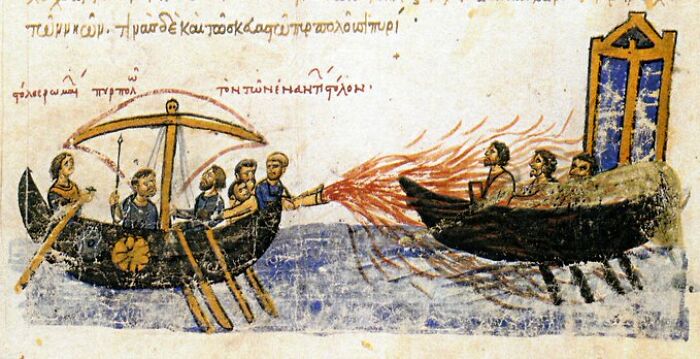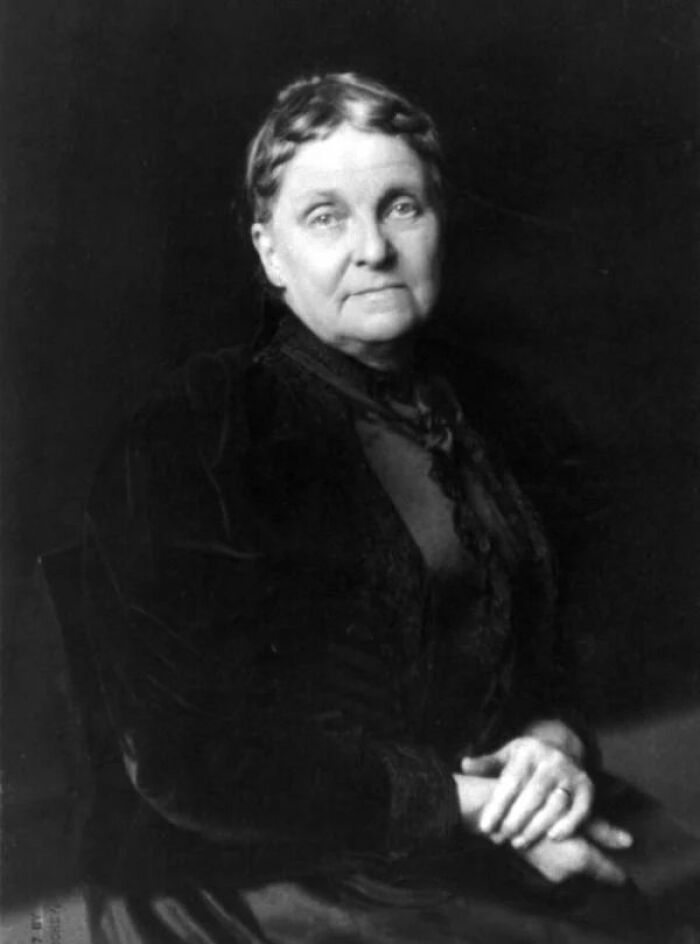It’s a fascinating world we live in; and the deeper into its secrets we delve, the more there is to discover. That’s probably the reason all sorts of informative platforms online—whether they’re focused on videos, podcasts, or other formats—seem to be blooming nowadays.
One of such rabbit holes of information about anything and everything in life is the ‘fasc1nate’ account on X (Twitter). The posts, enthralling you to scroll for hours, cover information about science, gadgets, history, art, and much more, providing a little something for everyone to enjoy. We have gathered some of the most captivating examples shared by the account on this list for you today, so wait no longer and scroll through to learn something new.
This post may include affiliate links.
In 1913, 10-year-old Sarah Rector received a land allotment of 160 acres in Oklahoma. The best farming land was reserved for whites, giving her a barren plot. Oil was discovered there, and she became one of the country's first black millionaires
The crew of Return of the Jedi mocked Admiral Ackbar's ugly character design. Director Richard Marquand refused to alter it, saying, "I think it's good to tell kids that good people aren't necessarily good-looking people & that bad people aren't necessarily ugly people."
From 1940 to 1944, Corrie ten Boom and her family used their home in the Netherlands as a hiding place for Jews fleeing the Nazis.
They had built a safe room in their home above the family shop on Barteljorisstraat in the Dutch city of Haarlem.
There, Corrie ten Boom, her sister, and their father would save the lives of some 800 Jews fleeing the Nazis.
The ten Boom family joined the Dutch resistance after Germany invaded the Netherlands in 1940.
Guided by their religious beliefs, they quietly funneled desperate Jewish refugees to safety. But in 1944, an informer sent the Nazis straight to their door.
Corrie ten Boom survived her time in concentration camps — barely — but her father and sister did not.
Once the war ended, she set up a rehabilitation clinic for Holocaust survivors, preached the power of forgiveness, and wrote books about her experience.
And if holocaust deniers had their way, they would enable existing hate groups to flourish and work towards such atrocities again.
Born into slavery, Bass Reeves eventually won his freedom and became the first Black U.S. Marshal west of the Mississippi River, becoming one of the most legendary lawmen of the Old West.
Reeves excelled at capturing outlaws, using disguises and cunning tactics. He was responsible for arresting thousands of criminals over his remarkable career.
Despite rampant racism, he upheld his duty with unwavering principles
now this would make a great movie only one person for this role Denzel
The small French village of Chambon-sur-Lignon received a surprise $2.4 million gift in the will of a 90-year-old Austrian man named Eric Schwam.
Shocked officials soon learned that Schwam was paying the town back for saving him and his family from the Nazis 80 years earlier.
He asked that the town use the money to fund education initiatives and scholarships for the local children
In 1999, Mustafa Xaja, a Kosovo-Albanian, shared heart-wrenching photographs of his children, whom he believed to have tragically perished during the war in Kosovo.
Recently released from captivity by the Serbs, he was compelled to flee across the border, seeking refuge in Albania. Only after the conflict had ended did he learn the joyous news that his family had survived unharmed
In the 1880s, the Harvard Observatory director was frustrated with his staff, and would say "My Scottish maid could do better!" So, he hired his Scottish maid. Williamina Fleming, who discovered tens of thousands of stars and more
Kim Ung-Yong started speaking at the age of 6 months. He could fluently speak four languages (Korean, Japanese, German, English) at the age of two.
At three, he understood and could solve Algebra.
At age eight, he was invited to America by NASA as a researcher, where he got his MSc at fifteen
Four seasons in the same place taken by Jozef Morgos in Žabokreky, Slovakia
Two little girls save their Teddy bear during the May blitz, Liverpool, 1941
Nellie Bly was an American journalist, who undertook a journey around the world in 1889.
Inspired by Jules Verne's famous novel, "Around the World in Eighty Days," Bly aimed to complete her journey in less time. With only two days' notice, she packed a small bag and left New York on a steamer heading east.
Bly reported her experiences and observations through telegrams to her newspaper, the New York World. She arrived back in New York just 72 days after her departure, setting a new world record, and even had enough time to interview Jules Verne during her travels
She also feigned insanity and had herself admitted to The Women's Lunatic Asylum in New York in order to write an expose on the horrible conditions and treatment of the patients. She did this with the knowledge of her editor, who managed to get her released after ten days. The uproar from the public after her story was published, caused many changes and reforms in mental hospitals.
MIT will award you a Certificate in Piracy if you take archery, pistols, sailing, and fencing as your physical education classes
It's both silly and pretty damn cool! I might have a bit of a problem with the sailing as I've been landlocked my whole life.
Julia Butterfly Hill is an environmental activist who lived on a 1500-year-old California redwood tree she named Luna for 738 days between 1997 and 1999 to prevent it from being chopped down by a logging company. Her actions saved the tree from being chopped down.
In this photo by Yann Gamblin, you can see Julia in her treetop home
That same tree was also vandalized in 2000 with a chainsaw leaving a 3 ft cut. It was bolted back together so it could heal. tree-64f19...5b2b4d.jpg 
Statue of King Arthur by Rubin Eynon, Tintagel Castle, England
There's a resort in Finland where you can camp in a glass igloo and lay back and watch the aurora borealis
The stunning wooden spiral staircase of Peles Castle. Sinaia, Romania
Sheikh Lotfollah Mosque is a masterpiece of Persian architecture. It was built during the Safavid Empire, standing on the eastern side of Naqsh-i Jahan Square, Esfahan, Iran
That is stunningly beautiful. I always loved Middle Eastern architecture.
The "Blue Fugates" were a Kentucky family with a hereditary trait resulting in a blue tint to their skin that baffled people for generations
In 1990, the windshield of British Airways Flight 5390 came off at an altitude of 17,000 feet. This triggered a sudden decompression in the cockpit, resulting in the captain being partially ejected out of the aircraft.
As luck would have it, Nigel Ogden, a flight attendant, was on his way into the cockpit at that moment. He managed to grab hold of the captain and maintain his grip for over 20 minutes while the copilot attempted an urgent landing.
Although the majority of the crew presumed that the pilot had already lost his life, Ogden did not let go.
There was a prevailing fear that if Ogden did release his hold, the pilot's body might strike the plane's engine, wing, or stabilizer, causing even more chaos.
All Ogden knew was that the pilot was gradually slipping more and more out of the window and his head was continuously being battered against the airplane's body.
Finally, after a distressing 20-minute flight with a gaping window, the aircraft was safely brought down at Southampton Airport. In the course of events, Ogden suffered from frostbite on his face, damage to one of his eyes, and a dislocated shoulder. In a miraculous turn of events, the pilot survived the ordeal, although he had frostbite and multiple fractures on his arms and hands.
The image is a recreation from the television series "Mayday!"
The captain, 42-year-old Timothy Lancaster, returned to flying after recovering from the incident.The copilot, 39-year-old Alastair Atchison also continued flying. Ogden returned to work, but subsequently suffered from PTSD and retired in 2001 on the grounds of ill health.
This oak door belonging to Westminster Abbey is the oldest door in Great Britain. It has been standing for over 950 years, dating back to the reign of Edward the Confessor in the 1050s. The door was made from a single oak tree
It was carved from a mature oak, which could have been a sapling 500 years before the door was constructed.
When she was 23, Rosemary Kennedy, the sister of JFK and RFK, had a forced lobotomy arranged by her father. The surgery left her incapacitated for the rest of her life
Apparently when her two famous brothers found out they were so appalled they worked toward bringing in new legislation to protect people like her. She had learning difficulties and needed special education, but when she grew older and became rebellious her dear old dad was afraid she'd get pregnant out of wedlock and damage her brothers' political careers. Hence the lobotomy, which went disastrously wrong and caused even more damage than a "successful" lobotomy. I own a book on the subject and the description of the procedure done on her will haunt me for the rest of my life.
On March 18, 1944, 27-year-old Aimo Koivunen and his Finnish ski unit were in Lapland, Finland's northernmost region, when they were attacked by superior Soviet forces. Forced to retreat through deep snow, Koivunen found himself exhausted.
He remembered he had a supply of Pervitin, an early form of crystal meth used in World War 2. Unable to open just one pill while skiing away, he swallowed all 30 pills. This gave him an immediate burst of energy, allowing him to outpace the Soviets and his unit before passing out.
When he woke up, he'd covered 100 kilometers (62 miles) alone and high, without food or ammunition. He kept skiing, encountering the Soviets multiple times but always escaping, even after an injury from a landmine.
He traveled 400 kilometers (250 miles) to reach Finnish territory. Upon arrival, he weighed only 94 pounds, and his heart raced at 200 beats per minute. He survived until age 71, dying in 1989.
1,500-year-old Ceramic Maya Figurine with Removable Helmet, from El Perú-Waka', Petén, Guatemala
Saudi Arabia accidentally printed thousands of textbooks containing this image of Yoda sitting next to King Faisal while he signed the 1945 UN charter
The "Time Lady" or "the Speaking Clock" before the introduction of automated equipment. Her job: giving the correct time 'live' all day long. C. 1930s
At its height, around four centuries before Columbus arrived in the Americas, Cahokia was a thriving pre-American city with a population comparable to that of London at the time.
Situated in southern Illinois, just eight miles from today's St. Louis, it likely held the title of the biggest city in North America north of Mexico during its era.
The Mississippians, Native Americans who spanned much of what is now the southeastern U.S., from the Mississippi River to the Atlantic coast, were its builders.
Despite Cahokia being advanced and worldly for its era, its story remains largely unfamiliar to many Americans, including those in present-day Illinois.
This image is a painting by Michael Hampshire.
It was abandoned around 1350. There's no conclusive evidence as to why but sediment analysis suggest heavy flooding of the region
1,200 stone sculptures with different facial expressions at the nenbutsu-Ju Buddhist temple in Kyoto, Japan
A rare early 19th-century photo of the Great Sphinx from a hot air balloon. This is before it was excavated and restored
Before and after the excavation and restoration of the Ziggurat of Ur.
The Ziggurat of Ur was built around 4000 years ago by King Ur-Nammu of the Neo-Sumerian Empire, is one of the oldest surviving temples in Iraq. Located near Nasiriyah, it showcases religious practices from around 2050 BC.
The site was discovered in 1850 and was extensively excavated in the 1920s and 1930s. However, it suffered damage during the 1991 Gulf War. Today, excavations still occur, revealing more artifacts and findings
It looks like its been "restored" which whilst it makes it look nicer I wish people wouldnt because future generations always criticise the "restoration". Stone Henge is restored, originally most of the blocks were lying down and it was "restored" so when you see it and think "wow, amazing thats been standing for 4000 years" .... it hasn't.
In 1931, two psychologists, Winthrop and Luella Kellogg, began an experiment to see if a chimpanzee could learn human behavior by raising it with their own baby. The idea was to see if the chimp, named Gua, would learn to walk upright, speak, and engage in other human-like activities.
For the first few months, the experiment was going well. Gua learned to mimic some of the actions of Kelloggs' son, Donald.
However, after 9 months, the Kelloggs were forced to cancel the experiment. It turns out that Donald was beginning to behave like an ape himself, mimicking Gua's behaviors and even attempting to communicate with grunts and other animal-like sounds
A makeshift hospital during The Vietnam War, 1970
Can somebody smarter than me explain why this is in the water?
A Hindu sadhu (holy person) named Amar Bharati lifted his right hand in 1973 and has held it up ever since.
He sees this as showing his dedication to Lord Shiva and his goal of promoting peace worldwide. Bharati is a well-known holy man who often joins in large religious events called Kumbh Melas.
A 2000-year-old Thracian chariot with horse skeletons discovered by archaeologist Veselin Ignatov.
In 1863, Civil War veteran Jacob Miller was shot in the forehead at Brock Field at Chikamauga, Georgia. He had the following to say about it:
"When I came to my senses some time after I found I was in the rear of the confederate line.
So not to become a prisoner I made up my mind to make an effort to get around their line and back on my own side.
I got up with the help of my gun as a staff, then went back some distance, then started parallel with the line of battle.
I suppose I was so covered with blood that those that I met, did not notice that I was a Yank, (at least our Major, my former captain did not recognize me when I met him after passing to our own side).
I suffered for nine months then I got a furlough home to Logansport and got Drs. Fitch and Colman to operate on my wound.
They took out the musket ball. After the operation a few days, I returned to the hospital at Madison and stayed there till the expiration of my enlistment, Sept. 17, 1864.
Seventeen years after I was wounded a buck shot dropped out of my wound and thirty one years after two pieces of lead came out.
Some ask how it is I can describe so minutely my getting wounded and getting off the battle field after so many years.
My answer is I have an everyday reminder of it in my wound and constant pain in the head, never free of it while not asleep.
The whole scene is imprinted on my brain as with a steel engraving. I haven’t written this to complain of any one being in fault for my misfortune and suffering all these years, the government is good to me and gives me $40.00 per month pension."
$40 in 1863 is equivalent to approx $1,473 for those wondering.
Physicists and Nobel Prize winners Marie Curie and Pierre Curie shortly after their wedding. France, 1895
This is a crusader sword dating back 900 years. The discovery was made by Shlomi Katzin whilst he was scuba diving a natural cove near the ancient port city, that the crusaders captured from the Arabs during the early 12th century AD
A Roman military diploma was discovered in Croatia in 1997. This ancient document, found in a river, dates all the way back to 71 AD.
These military diplomas were like golden tickets for retiring Roman soldiers. They were evidence of an honorable discharge from the Roman army and came with great perks. For instance, the diploma granted Roman citizenship to the soldier and their entire family.
These privileges went beyond just bragging rights. Roman citizenship came with tangible benefits, like being exempt from certain taxes, enjoying legal protection, and even the possibility of holding public office.
But what truly sets this discovery apart is that the diploma still bears the wax seals of those who witnessed the document. These seals were pressed onto the diploma to authenticate its contents and prove its legitimacy.
Roman soldiers in the Legion were roman citizens.... but the Auxilia (support troops formed by allies) would get roman citizenship after service
When an octopus' tentacle (arm or leg) is split, most often due to fighting, something called "over-regeneration can occur during the healing process.If this happens repeatedly, the octopus can have dozens of tentacles. The most ever counted was on an Octopus found in Matoya Bay, Japan, 1998. It had 96
Shortly after 9:30pm on Friday, 3 December 1926, Agatha Christie got up from her armchair and climbed the stairs of her Berkshire home.
She kissed her sleeping daughter Rosalind, aged seven, goodnight and returned downstairs again. Then she climbed into her Morris Cowley and drove off into the night. She would not be seen again for 11 days.
Her disappearance would spark one of the largest manhunts ever mounted. Agatha Christie was already a famous writer; more than one thousand policemen and hundreds of civilians were assigned to the case.
''The reason for Agatha's disappearance has been hotly contested over the years. Suggestions ranged from a nervous breakdown brought on by the death of her mother and embarrassment of her husband's affair, to a cynical publicity stunt to promote the successful but still little known author.''
Though details about the early life of the Greek philosopher Diogenes are limited, he is often the subject of wild speculation. What is evident, however, is that this ancient philosopher was among history’s most unconventional figures.
Diogenes was born around 412 or 404 B.C. in the distant Greek colony of Sinope. During his younger years, he assisted his father in coin minting for the colony, a profession they had to abandon when they were exiled for tampering with the gold and silver composition of the coins.
After his exile, Diogenes found himself in Corinth, a city in mainland Greece.
Upon his arrival, his behavior took a drastic turn. Left jobless, he chose the life of a wandering beggar. Discarding nearly all his belongings, he held onto only a few pieces of cloth for modesty and a wooden bowl for sustenance.
Diogenes was known to frequently interrupt Plato’s lectures, munching loudly to disrupt the discussions. He would vocally challenge Plato's philosophical notions and, at times, acted provocatively in public spaces. His audacity extended to relieving himself in the most unexpected places, including on Plato’s seat in his academy.
Diogenes' eccentricities were further emphasized by his habit of consuming food he found scattered about, sharing it with stray dogs that constantly trailed him—even into Plato’s lectures. Yet, in a surprising twist, Diogenes emerged as one of the most esteemed philosophers of Greece.
Tales of his sharp intellect are abundant, often leaving his contemporaries, Plato included, in the shadows.
A notable account is when Alexander the Great approached Diogenes, who was reclining naked atop the barrel he resided in. When the mighty ruler asked if there was any way he could assist the philosopher, Diogenes responded, “You could move out of my light.”
Mata Hari was a renowned Dutch dancer known for her great beauty and skills. She quickly rose to fame as a much-desired performer across Europe.
During the First World War, she lived in Paris, surrounded by numerous influential admirers. There's speculation that she leveraged her intimate relationships with these men to collect intelligence for Germany, though the full scope of her activities remains debated.
In 1917, the French authorities arrested Mata Hari, charging her with espionage. She stood accused of relaying critical military information, such as troop movements, to the Germans. Despite her protests of innocence, she was convicted and sentenced to death.
Mata Hari met her end by firing squad on October 15, 1917. Her execution stirred international outrage, with many asserting she had been unjustly singled out by the French officials.
2,000-year-old face cream inside a metal container from Roman times with visible ancient finger marks. "The cream was composed of refined animal fat, starch, and tin.
The researchers then created their own version, made to the same recipe. When they rubbed the whitish cream into their skin, it produced a white layer with a smooth powdery texture. The latter quality was created by the starch—still used for this purpose in modern cosmetics."
Professor Richard Evershed from Bristol University said, "White face paint was fashionable in Roman times and normally derived its colour from a lead compound. A tin compound would have been an acceptable substitute and in good supply from Cornwall."
In ancient Rome, lead was the most popular metal and was commonly used in cups, plates, coins, pipes, cosmetics, face powder, paints, food seasoning, and even birth control.
Scientists have even discovered that tap water from ancient Rome contained up to 100 times more lead than local spring water.
As a result, some historians have speculated that lead poisoning may have played a part in bringing down the Roman Empire
Lead as birth control.... that might be an understatement.
During the mid-19th century, Paris faced significant challenges in managing the growing issue of public urination.
To address this, the city installed cast iron and masonry public urinals on the curbs of streets.
One such example is the urinal in Paris, France, dating back to 1865.
These urinals were designed to drain directly into the underground sewer system, providing a convenient and hygienic solution for the city's sanitation needs.
This innovative approach helped alleviate the problem of public urination, which was becoming a major concern in urban areas.
These urinals represented a step forward in urban planning and public health, as they improved sanitation conditions and contributed to the overall cleanliness of the city.
Public urinals were already in use 18 centuries before, in Rome. They were called "Vespasians", from the emperor that put a tax on urine collection. Urine was sought after for its ammonia content, so the urinals did not go into sewers but collected the liquid into underground pools that were later emptied and sold to tanners.
In 1989, a powerful photograph captured the attention of the world and shed light on the resilience and sacrifice of war veterans.
The image, taken by Ivan Kurtov, depicted Anatoly Golimbievsky, a decorated veteran who had lost both legs during World War II, being saluted by four young sailors.
The photograph was part of a larger photo story that Kurtov had been working on, focusing on the life of Golimbievsky. Kurtov had the opportunity to meet the veteran on Victory Day, celebrated on May 9th in Russia, when he was sent to a veterans meeting in Leningrad by his press agency, ITAR-TASS.
To honor Golimbievsky, Kurtov decided to stage a photo shoot with the veteran. He contacted the Nakhimov school for Naval Cadets and requested around 30 sailors to participate. However, only three sailors and one officer were sent to him. Despite this, Kurtov proceeded with the shoot.
Originally, Kurtov had planned to capture the photograph against the backdrop of the iconic cruiser 'The Aurora,' which was docked opposite the Nakhimov school. However, he found that the presence of the large ship was too distracting for the intended message of the photo. Instead, he opted to take the picture with the city in the background.
While the photo was approved by ITAR-TASS, many newspapers were hesitant to publish it, citing concerns about showcasing what they viewed as "pathology." Only when Kurtov won the first prize at World Press Photo did Russian newspapers begin to print the image.
The Statue of Liberty under construction
This isn’t a photo of the statue under construction. Look at it, it’s surrounded by flowers and trees. This is a photo of it in France where it was displayed at the World’s Fair in 1878. The torch and hand was displayed in America to help raise funds for its construction too. Don’t believe everything you read!
Charles II of Spain was the result of nearly 200 years of inbreeding. The House of Habsburgs stopped introducing new genes at around 1550, leading to a circular family tree.
Charles II had been born the son of an uncle-niece relationship, and historians Will and Ariel Durant described him as "short, lame, epileptic, senile and completely bald before 35, always on the verge of death but repeatedly baffling Christendom by continuing to live."
Before the age of six, Charles II had managed to survive an onslaught of diseases, which included chickenpox, measles, rubella, and smallpox. He could not walk until he was 8 years old and could not chew food on his own. His tongue was so large that no one could understand what he was saying.
The nuncio papal Millini provided the following description of Charles II:
“The king is rather short, skinny, but not badly formed, only ugly in the face; he has a long neck, a long face, a long chin and as if it bent upwards; the lower lip typical of the Habsburgs; not very large eyes, turquoise blue and a fine and delicate complexion. He has a look with melancholy on his face and a little astonished. His hair is blond and long, and it is combed back so that the ears are exposed. He cannot straighten, unless he leans against a wall, a table or something else. His body is as weak as his mind. From time to time he shows signs of intelligence, memory and a certain liveliness, but not now; he usually looks slow and indifferent, appearing dumbfounded. You can do whatever you want with him, since he lacks of own will."
Charles II's death in 1700 (at the age of 39) led to the War of Spanish Succession.
His autopsy report stated that his "heart was the size of a peppercorn; his lungs corroded; his intestines rotten and gangrenous; he had a single testicle, black as coal, and his head was full of water."
Dude was so inbred he didn't have a family tree, he had a family wreath
Stair dust corners are flexible, triangular pieces designed to prevent dust buildup in the corners of stairs. While classic versions were typically brass or nickel, contemporary ones are plastic. These were introduced in the late 19th century to make sweeping easier
August 27, 1993: The Rainbow Bridge, a 1,870-foot suspension bridge over Tokyo Bay, was completed. The lighting on the bridge can change depending on the season or special occasion. It is a popular attraction for both tourists and locals, an impressive and enjoyable feat of engineering
The name "Bluetooth" technology was inspired by Harald Bluetooth, a Viking king who lived more than a millennium ago. Just as he brought together the regions of Denmark and Norway, this technology connects various electronic gadgets today. The Bluetooth symbol combines the Nordic runes representing his initials, H.B.
The origin of his unique nickname remains a subject of discussion. Some believe it was because he frequently consumed blueberries, leaving his teeth stained blue, while others suggest it was due to a discolored tooth with a blueish-grey hue
In 1959, this captivating photograph was taken on the lot of Goldwyn Studios, featuring four iconic figures of the entertainment industry: Sidney Poitier, Tony Curtis, Sammy Davis Jr, and Jack Lemmon.
Sidney Poitier, an esteemed actor, was the first African-American to win an Academy Award for Best Actor. He broke down barriers in Hollywood and became an influential civil rights activist. Poitier's achievements paved the way for greater representation and opportunities for black actors in the film industry.
Tony Curtis, a versatile actor known for his charm and versatility, starred in numerous classic films such as "Some Like It Hot" and "Spartacus." Curtis was of Hungarian-Jewish descent and faced his own share of challenges in an industry that often typecast actors based on their ethnicity.
Sammy Davis Jr., a multi-talented entertainer, significantly contributed to music, dance, and acting. As an African-American artist, Davis Jr. faced racial discrimination throughout his career. Despite these obstacles, he achieved great success and became an influential figure in the entertainment world.
Jack Lemmon, a highly regarded actor, was known for his versatility and ability to seamlessly transition between comedic and dramatic roles. He starred in several acclaimed films, including "Some Like It Hot" alongside Tony Curtis. Lemmon's career spanned over five decades, and he left a lasting impact on the film industry
This photo from 1902 shows French knife grinders. They would work on their stomachs to save their backs from being hunched all day.
They were also encouraged to bring their dogs to work to keep them company and also act as mini heaters by having them rest on their owners’ legs.
They were also called ventres jaunes (“yellow bellies” in English) because of the yellow dust that would be released from the grinding wheel
Baker Street station, as the world's oldest underground station, had a profound impact on urban transportation, revolutionizing the way people traveled within the bustling city of London and paving the way for future developments in underground transit systems worldwide.
Prior to the establishment of the Metropolitan Railway, London faced significant challenges in terms of congestion and inefficient transportation. The introduction of the underground railway system, with Baker Street station at its forefront, addressed these issues head-on. The station provided a solution to the growing transportation needs of the city's population.
Baker Street station, designed by architect John Fowler and engineer J.H. Greathead, set the standards for subsequent underground stations. Its layout, which incorporated spacious platforms, well-designed entrances, and efficient ticketing systems, offered a blueprint for future station designs. The success and popularity of the station demonstrated the viability of underground railways as a means of mass transit, inspiring the expansion of similar networks in other cities.
The opening of Baker Street station marked a turning point in the history of urban transportation. It sparked a wave of enthusiasm for underground railways, leading to the development of additional lines and stations across London. This expansion not only alleviated congestion on the city's streets but also provided faster and more efficient travel options for commuters.
Marilyn vos Savant is a New York magazine columnist known for writing "Ask Marilyn."
But her most well-known claim to fame is her brain: Marilyn vos Savant has the highest recorded IQ in the Guinness Book of Records and has often been referred to as “the smartest person in the world.”
In a small village in Suffolk in the twelfth century, two green-skinned children appeared, speaking an incomprehensible language.
Believed to be inhabitants of an unknown land, the green children of Woolpit became a strange piece of folklore.
I've heard this story so many times before. I still don't understand anything though
A French woman walks the streets of Paris, France with a large baguette and six bottles of wine, 1945
Scottish man Angus Barbieri fasted for 392 days, from June 14, 1965 to July 11, 1966. He lived on tea, coffee, soda water, and vitamins while living at home in Tayport, Scotland, and frequently visiting Maryfield Hospital for medical evaluation. He lost 276 pounds and set a record for the length of a fast
In 1946, a group of Russian children from the Vladimir Lenin All-Union Pioneer Organization presented a carved wooden replica of the Great Seal of the United States to Averell Harriman, the U.S. Ambassador to the Soviet Union.
The gift was meant as a gesture of friendship to the USSR's World War II ally and was hung in the ambassador's official residence at Spaso House in Moscow. For seven years, it adorned the study wall until a discovery was made by the State Department: the seal was more than a mere decoration; it was a bug.
The Soviets had cleverly built a listening device into the replica seal, which they had been using to eavesdrop on Harriman and his successors the entire time it was in the house.
The discovery of "The Thing," as it was nicknamed by the U.S. intelligence community, confirmed the suspicions of diplomats and other Americans working in the USSR who had already suspected they were being monitored
There was an interesting and innovative technological aspect in this, thanks to contribution of the renowned radio scientist Leon Theremin (of musical instrument fame). The bug was actually completely unpowered, drawing the little energy it required to work from the soundwaves it intercepted. The bug was "illuminated" by radio waves from the receiver, that were disturbed by the sound receiving system and then re-intercepted by Russian operatives. It took a complex demodulation algorithm to convert the disturbed radio waves to usable signals
Color Photo Of The 'Titanic' That Bring It Back To Life
Colors are a bit wrong. The Titanic's funnels were not that dark yellow/brownish. Their color was a shade of orange-pink known as "White Star Buff", that was registered as the official color for White Star Lines's funnels for recognition purposes. The actual color is close to (RGB 100;75;100) or CMYK (0;20;50;0) bitmap-64f...99-png.jpg 
This is Baba Anujka, an accomplished amateur chemist and serial killer from the village of Vladimirovac, Yugoslavia (in Serbia), who poisoned between 50 and 150 in the late 19th and early 20th centuries
John Harvey Kellogg was an American businessman, inventor, physician, and advocate of the Progressive Movement.
On top of that was a sex-obsessed eugenicist who invented breakfast cereal and held patents for peanut butter, soy milk, and imitation meats
I'll never understand how corn flakes were supposed to curb masturbation
De Beer mine worker is X-rayed at the end of his shift before leaving the diamond mines. In Kimberley, South Africa, October 1954
An incomplete sculpture of Lakota Warrior Crazy Horse has been under construction since 1948.
Crazy Horse displayed bravery in leading his tribes in several significant battles throughout the 1800s, but eventually had to surrender to American forces. Following his surrender, his death on September 6, 1887, while in government custody, remains a subject of controversy.
Fast forward to 1939, Lakota Chief Henry Standing Bear corresponded with Polish-American architect Korczak Ziolkowski, requesting the creation of a monument to honor Crazy Horse's legacy.
The warrior was remembered and revered by his people for his courage, leadership, and unwavering spirit. When construction commenced in 1948, Ziolkowski estimated that completing the monument would take approximately 30 years.
However, this projection proved to be a significant underestimation, as the project remains unfinished even after seven decades (Ziolkowski passed away in 1982). Numerous challenges have contributed to the delays, including the complexity of carving the sculpture into the side of a mountain, requiring appropriate equipment, and contending with adverse weather patterns.
Funding has also been an ongoing issue. Currently, there is no set deadline for the completion of the monument. Only the head of Crazy Horse has been finished, with the hand, arm, shoulder, hairline, and the top of the horse's head slated for completion within the next 15 years.
When construction commenced in 1948, Ziolkowski estimated that completing the monument would take approximately 30 years. However, this projection proved to be a significant underestimation, as the project remains unfinished even after seven decades (Ziolkowski passed away in 1982).
Numerous challenges have contributed to the delays, including the complexity of carving the sculpture into the side of a mountain, requiring appropriate equipment and contending with adverse weather patterns. Funding has also been an ongoing issue.
The sculpture of Lakota Warrior Crazy Horse, still incomplete, has been in construction since 1948.
Crazy Horse was a courageous figure who led his tribe through many pivotal battles during the 1800s.
However, he eventually capitulated to American forces. His death on September 6, 1887, under government detention, is mired in mystery and debate.
In 1939, Lakota Chief Henry Standing Bear reached out to Polish-American architect Korczak Ziolkowski, expressing the desire for a monument commemorating Crazy Horse's enduring legacy.
As the monument's construction began in 1948, Ziolkowski anticipated a completion timeline of roughly 30 years.
Nevertheless, this timeframe turned out to be a vast understatement. Despite over seven decades of work (and Ziolkowski's passing in 1982), the sculpture is yet to be finished.
Several factors have prolonged the endeavor:
-The intricacies of sculpting into a mountain's face
-The necessity for specialized equipment
-Challenging weather conditions
Securing adequate funds has been a recurring challenge. At present, there's no finalized date for the monument's completion.
While Crazy Horse's head is carved out, the hand, arm, shoulder, hairline, and the top portion of the horse's head are projected to be finished in the next 15 years.
Two stylish young men stroll down the street after leaving Cambridge, 1926
If you're curious about their strange pants, they're called Plus Fours. Plus fours are breeches or trousers that extend 4 inches (10 cm) below the knee (and thus four inches longer than traditional knickerbockers, hence the name).
Plus fours were introduced in the 1920s and became popular among sportsmen--particularly golfers and game shooters--as they allowed more freedom of movement than knickerbockers.
An “extravagant, careless style that fit right in with the looser fashions and lifestyles of the 1920s,” plus fours were introduced to America by Edward, Prince of Wales (later Edward VIII) during a trip in 1924
This photo shows the Statue of Liberty seen from the torch. The torch has been closed to the public since 1916 when it was damaged in an explosion caused by German spies.
The event is known as the Black Tom explosion on July 30, 1916. At that time, the United States had not yet joined World War 1, but they were selling weapons to the Allied powers.
Germany sent saboteurs to destroy production lines and supplies. Around 100,000 pounds (45,000 kg) of TNT were stored on a barge on the night of the explosion.
Guards noticed small fires and left, fearing an explosion. At 2:08 am, the first and biggest explosion occurred. It was one of the largest non-nuclear explosions in history, equivalent to 5.0 and 5.5 on the Richter scale.
The blast was felt in Philadelphia and shattered windows in Times Square. The explosion caused $20,000,000 in damages and claimed four lives. This incident turned public opinion against Germany and eventually led the United States to join World War 1 on April 16th, 1917
Another problem with access to the torch is that it is a steep, narrow stairway, almost a ladder, with one-way at a time traffic.
Cassie Chadwick, the "Queen of Sham."
Cassie Chadwick was a scammer in the United during the 19th century. She was known for her ability to tell elaborate lies and her charming demeanor, which helped her gain the trust of wealthy individuals.
In the late 19th century, Chadwick began posing as the famous industrialist and philanthropist Andrew Carnegie's illegitimate daughter.
She used this fake identity to defraud banks and investors of millions of dollars, promising them access to her father's vast fortune.
Chadwick maintained her scam for several years, using her charm and cunning to keep investors at bay. She lived lavishly, buying expensive clothes and jewelry and even building a mansion in Cleveland, Ohio.
However, in 1904, Chadwick's scheme finally caught up with her. One of her investors, a banker named Herbert B. Newton, became suspicious of her claims and began to investigate. He discovered that Chadwick had no connection to Andrew Carnegie and that her entire persona was fabricated.
Chadwick was eventually arrested and sentenced to prison, where she died in 1907.
Tarrare was a real historical figure who lived in France during the late 18th century. He was known for his insatiable hunger and bizarre eating habits.
He suffered from a rare medical condition called polyphagia, which caused him to constantly crave and consume large quantities of food, including non-food items.
Tarrare drew crowds by eating corks, stones, and live animals. At one point he even swallowed an entire basketful of apples one after the other.
Despite his ability to eat enormous amounts, Tarrare’s health deteriorated rapidly, and he faced numerous health complications due to his condition.
His life remains a fascinating medical mystery, with many unanswered questions about the nature and causes of his unique condition
The Beast of Bray Road, is the name given to a wolf-like creature allegedly reported to have been witnessed in or near Elkhorn, Walworth County, Wisconsin.
The creature has become a part of Wisconsin folklore and has been the subject of multiple books, documentaries, and a 2005 horror film
Frank Sinatra selfie, taken at his apartment in Hoboken, New Jersey, 1938
The worn marble steps of the Leaning Tower of Pisa.
This iconic freestanding bell tower began tilting during construction due to an inadequate foundation on soft ground.
It was completed in 1372 after 199 years of construction. The tower stands at 55.86 meters (183.27 feet) on the low side and 56.67 meters (185.93 feet) on the high side.
Crafted from marble and stone, the tower boasts 296 steps leading to its pinnacle, accompanied by seven bells
Colonel Sanders would often make surprise visits to KFC restaurants. If dissatisfied with the food he threw it to the floor while cursing out the employees
Koca Yusuf, also known as "The Terrible Turk," was a prominent Ottoman wrestler from 1857 to 1898. He was known for his strength, skill, and size, making him one of his day's most feared and respected wrestlers.
Born in the Ottoman Empire, Yusuf began wrestling as a child. Wrestling held great cultural significance in the Ottoman Empire, being both a popular sport and a symbol of strength and valor. Yusuf quickly rose to prominence due to his natural abilities and years of dedication to his craft.
His impressive size was one of the most notable aspects of Koca Yusuf's wrestling career. He was 7 feet tall and weighed over 300 pounds. His immense size, coupled with his agility and technique, made him virtually unbeatable in the wrestling arena.
Yusuf's fame extended beyond the borders of the Ottoman Empire, and he gained recognition as one of the greatest wrestlers of his time. He participated in numerous wrestling competitions and tournaments, both within the Ottoman Empire and internationally. His fellow countrymen celebrated his victories, and he became a symbol of national pride.
One of Yusuf's most significant achievements was his victory over the renowned French wrestler Leon Petit. In 1888, the two faced off in a highly anticipated match in Paris. Despite Petit's reputation as a skilled wrestler, Yusuf emerged victorious, solidifying his status as a global wrestling sensation. This triumph further elevated his fame and reputation.
In addition to his wrestling prowess, Koca Yusuf was known for his philanthropy and gentle nature outside of the wrestling arena.
Tragically, Koca Yusuf's life was cut short when he died at 41 due to complications from tuberculosis. His untimely death was a great loss to the wrestling world, and he was mourned by his fans and fellow wrestlers alike.
In 1933, New York silk merchant A.L. Kahn was fishing off the coast of New Jersey when something enormous became ensnared on his anchor line.
For hours, he and his mates struggled with the great beast, eventually getting help from the U.S. Coast Guard and using several dozen bullets to finally subdue this unbelievable "devil fish."
When they finally got it aboard, they saw the enormous manta ray they'd just landed. This was one of the most staggering sea creatures ever captured at over 20 feet wide and weighing in at over 5,000 pounds.
Soon, Kahn had the ray taxidermied( a way to preserve an animal for public display) and strung up on a crane, charging ever-growing crowds 10 cents a piece to see this astounding marine beast that remains shocking to this day
In the mid-20th century, the enchanting city of Venice found itself facing a unique challenge: the need to clean and drain its intricate network of canals.
Venice, renowned for its picturesque waterways, had long relied on these canals for transportation, trade, and as an integral part of its identity.
However, the accumulation of silt and debris over the years necessitated a comprehensive cleaning effort to restore the canals to their former glory.
The year 1956 witnessed an extraordinary undertaking as Venetians worked tirelessly to drain and clean one of the city's iconic canals.
Caption is plain wrong. This is not something unique to 1956, nor an "extraordinary undertaking". This kind of maintenance was common routine: when a channels had silt build-up, cofferdams were placed at either end, dredgers would clean the silt, replace the wooden posts and the channel was reopened. Nowadays is less common, the channels are cleaned with dredge boats so there is no need to close the waterways.
In July 1945, the USS Indianapolis completed a top-secret mission to deliver Uranium for "Little Boy," the first nuclear weapon used in combat, to the Tinian Naval Base.
Shortly after departing for its next mission, it was sunk by a Japanese torpedo. The 890 survivors of this attack were left adrift at sea for days, battling dehydration, exposure, saltwater poisoning, and shark attacks with limited lifeboats and virtually no supplies
The Lady of Elche is a limestone bust that is believed to have been created during the Iberian period in Spain, which lasted from the 6th to the 1st centuries BCE. The bust was discovered on an estate called La Alcudia in Elche, Alicante, Spain in 1897 by a young worker named Manuel Campello Esclapez. The discovery caused a sensation and immediately attracted the attention of archaeologists and art collectors alike.
The limestone bust is beautifully and intricately carved, featuring a woman's face and elaborate headgear. The clothing, jewelry, and headdress suggest that the figure was of high status, possibly royal or divine. The headdress is particularly noteworthy, featuring a large, circular crown-like structure with intricate details and a series of smaller, triangular shapes that radiate outwards.
The identity of the Lady of Elche is a subject of much debate among scholars. Some believe that she represents a deity or goddess, while others suggest that she was a high-ranking member of an Iberian tribe. There are even those who argue that the bust is a forgery, created during the Renaissance or later.
After its discovery, the bust was quickly sold to a French art collector named Pierre Paris, who took it to Paris. Its removal from Spain sparked an intense diplomatic disagreement between the two countries. The Spanish government demanded its return, and the French government eventually agreed to return the bust to Spain in 1941, as a gesture of goodwill during World War II
A man begging for forgiveness inside a Chicago divorce court, 1948
This is Anna & Steve Strack. They lived in Illinois and at the time, it was required to provide evidence and a reason for divorce. Anna's reason was Steves habitual drunkenness.
Photo of an ironworker during construction of the Columbia Tower, Seattle, 1984
The life of Robert Wadlow, the tallest man to ever live
Not to be outdone by the Eiffel Tower, here are some of the many rejected designs for the Great Tower of London
The Great Tower of London (or Watkins Tower) was only partially completed and then completely demolished in 1907. It was located in Wembley which is to the North West of the City. Not to be confused with The Tower of London which has had a fortress on its site since the Romans founded Londinium
On September 15, 1896, two trains collided head-on about 14 miles north of Waco, Texas. Upon collision, the boilers of the locomotives exploded, scattering debris over a wide area and leading to the death of at least two onlookers and injuring many more.
Yet, no one fled the scene.
Following the crash, a multitude from the surrounding area surged forward, eager to collect a fragment of the debris. This was because the crowd of approximately 40,000 had anticipated the collision, having paid to see the spectacle.
From 1896 to the 1930s, orchestrated train collisions were a crowd-pulling event at many U.S. fairs and festivals, a phenomenon predating the concept of demolition derbies or monster truck rallies.
Caption is misleading. The crowd did not "anticipate the collision". The collision was deliberately planned as a stunt and marketed as "The Crash at Crush" (Crush being the name of the temporary town built for the event, named after William Crush, the event organizer). The railway brought people to the site making money from tickets for the special touristic trains and from concessions and even a circus; two old locomotives were launched into each other. See photo attached for the exact impact moment: the photographer was wounded by the exploding boilers and lost an eye. The_Trains...8d4515.jpg 
With a length of 458 meters (1,504 feet), the Seawise Giant was the longest self-propelled ship ever built.
When at full speed, Seawise Giant needed 9 kilometers (5.5 miles) to stop.
The rudder weighed 230 tons, the propeller weighed 50 tons, and the anchor weighed 36 tons
It's also the heaviest ship ever built. Until 2013, it was the longest ship ever built, being demoted to the "self-propelled" subcategory after Shell built an unpropelled gas tanker about 30 meters longer. She had an interesting life: it was not supposed to be so big, it was increased in length after performance issues prevented acceptance from the original client and to justify the extra expense for the refit the shipyard decided to lengthen it an extra 25%. At one point it was sunk by Iraq during the 1980s "Tanker wars", and left abandoned for three years before being refloated and rebuilt. Nowadays, it would be unthinkable to build such a large crude tanker with a single hull construction.
Hoover Stew is a Depression-era Cuisine staple named after United States President Herbert Hoover, whom many Americans blamed for the Great Depression.
Popular in soup kitchens then, this cheap stew was a thin broth consisting of sliced hot dog rounds, cooked macaroni, canned tomatoes, and canned corn, beans, or peas
Ruffs were changeable pieces of cloth that could be laundered separately while keeping the wearer's neckline dirty.
The stiffness of the garment forced an upright posture. Their impracticality led them to become a symbol of wealth and status from the mid-15th to the mid-16th century
Nearly 200 years prior to the witch trials of Salem, Massachusetts, European courts were condemning men—and occasionally women—of morphing into werewolves and savagely attacking and eating children.
Across 15th, 16th, and 17th century Europe, werewolf trials were commonplace, propelled by superstition, and religious and societal conflicts.
The accused often included beggars, loners, or newcomers. Numerous admissions of being werewolves and perpetrating monstrous deeds came from the accused, but these confessions frequently came after being tortured.
Some historians theorize that a portion of these individuals might have been delusional or lacked the cognitive capacity to grasp their own confessions.
While a minority could have indeed been genuine child killers, historical accounts are fragmented and often sensationalized. Centuries later, it's difficult to untangle folklore from real evidence or what people believed to be real at the time
A unique hairstyle. 1894/95
The curious case of the stolen Boeing 727 at Luanda International Airport in 2003.
This incident captivated the world, leaving aviation authorities in disbelief. How could such a large aircraft be taken without a trace?
On May 25, 2003, two individuals managed to gain unauthorized access to the Luanda International Airport in Angola in the early morning hours.
They targeted a parked Boeing 727, a mid-sized passenger aircraft known for its versatility and reliability. The thieves, with some level of aviation knowledge, skillfully bypassed security measures and made their way onto the aircraft.
Now, you may wonder how to fly away with a Boeing 727 without raising suspicion.
The stolen aircraft was not equipped with modern tracking systems like GPS, making it significantly more challenging for authorities to locate it.
This absence of advanced technology favored the thieves, granting them a head start in their daring escapade.
Once inside the cockpit, the thieves skillfully started the engines and taxied the plane to the runway. The aircraft took off smoothly, leaving the unsuspecting airport staff and air traffic control bewildered. The stolen Boeing 727 soared into the African sky, disappearing without a trace.
The stolen aircraft belonged to a private company, and its disappearance immediately triggered a massive international search operation. Governments, intelligence agencies, and aviation authorities worldwide were on high alert, attempting to track the stolen plane's whereabouts. Despite their best efforts, the stolen Boeing 727 and the culprits remained elusive.
Numerous theories have emerged over the years regarding the fate of the stolen Boeing 727. Some speculate that the aircraft may have been repainted and hidden in a remote location, while others suggest it crashed in an inaccessible area.
It forgets to mention a detail that takes away a lot of the mistery... the "two individuals" were an american and a Congolese mechanic tasked by the plane owner to recover it. The plane was leased to an operator who defaulted payments and accrued million of dollars in airport parking costs and fines.
There are two doors. One leads to the castle; the other, to certain death. You may ask one question, to one guard, to help you decide which door is the correct one. One guard always lies, and one always tells the truth. How do you choose?
You ask " which way would the other guard tell me is the way to the castle" and then you go the opposite way.
Greek Fire, the Byzantine Empire’s secret weapon
Hetty Green was one of the most eccentric millionaires in America's Gilded Age.
Despite her vast wealth, Hetty was miserly to the point of absurdity. For instance, she never spent money on an office, preferring to conduct business sitting on the floor of her bank, surrounded by paperwork.
When her son Ned broke his leg as a child, Hetty tried to set the leg herself. When that didn’t work, she disguised herself and her son as paupers and tried to get in at the free clinic. After they kicked her out, Hetty — the boy’s screams be damned — finally set the broken leg.
Apparently, she did finally consent to pay for medical care when Ned’s leg became infected and had to be amputated.





